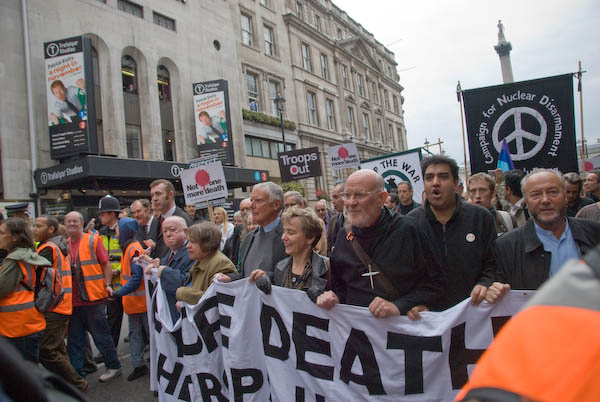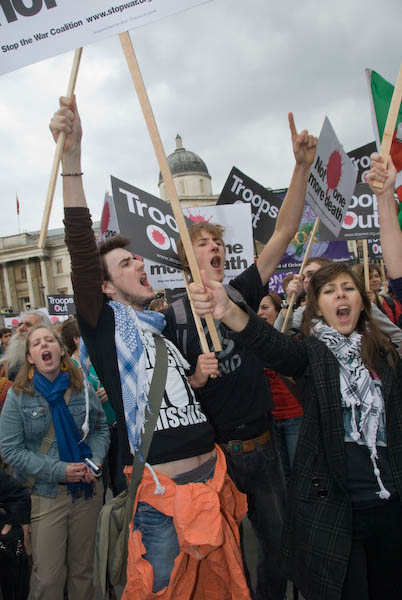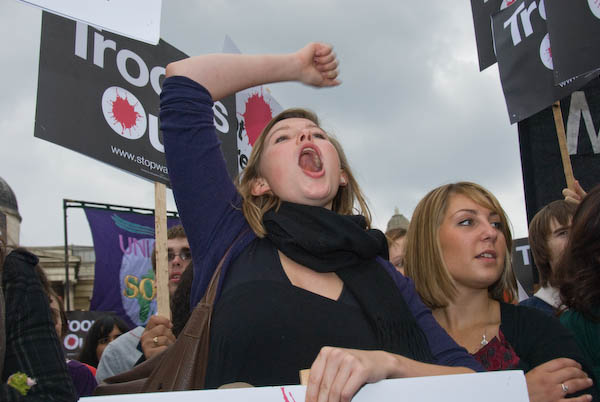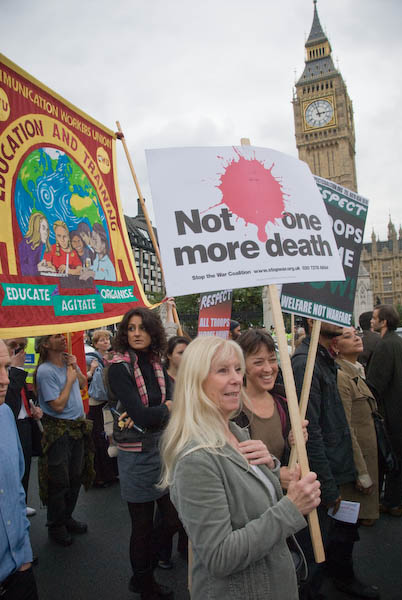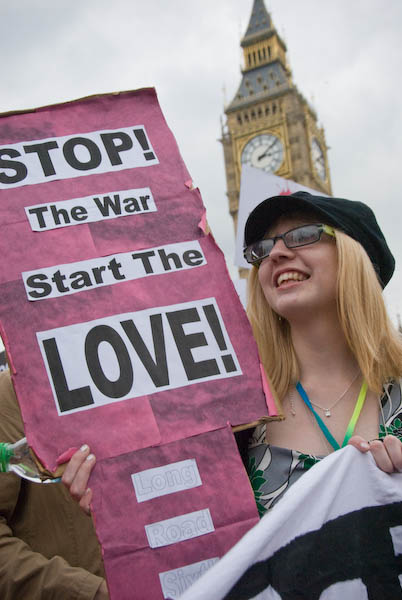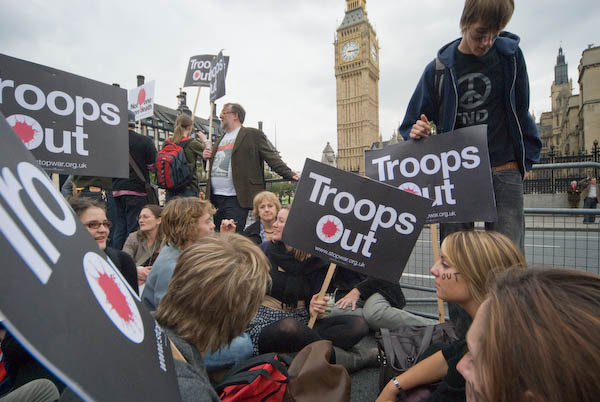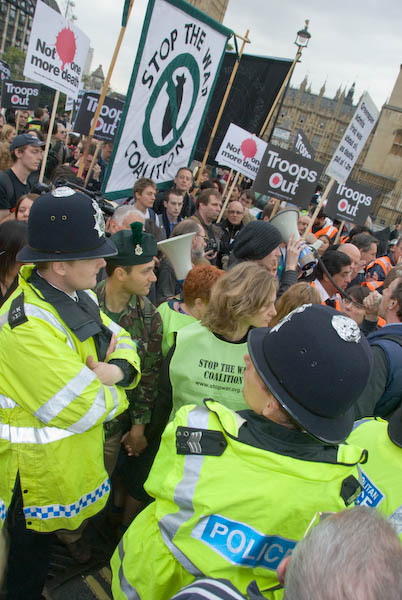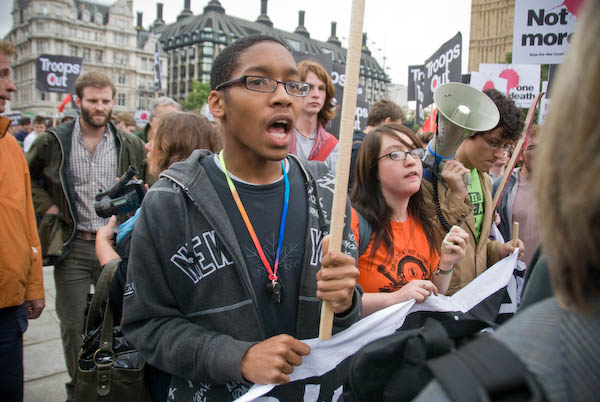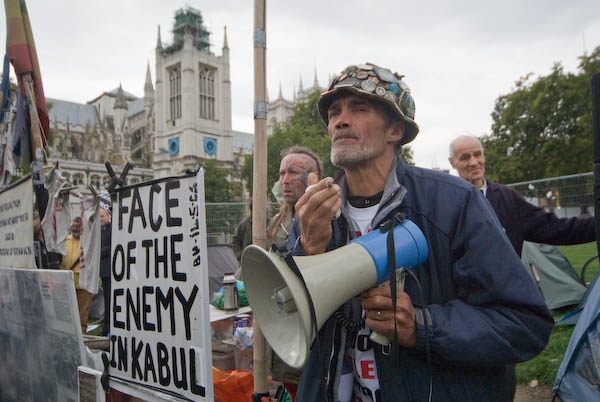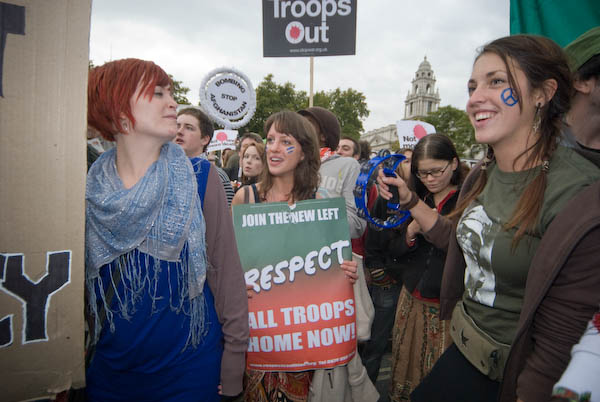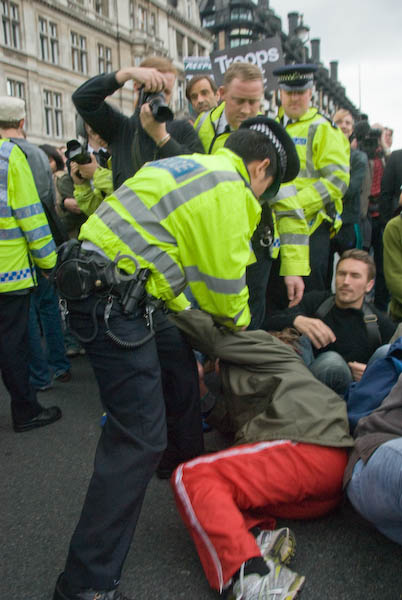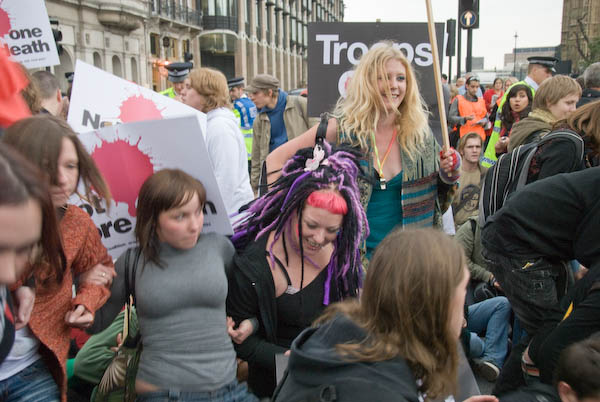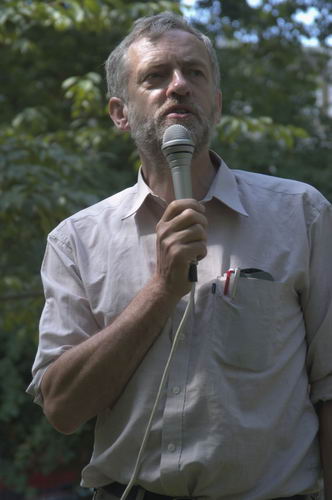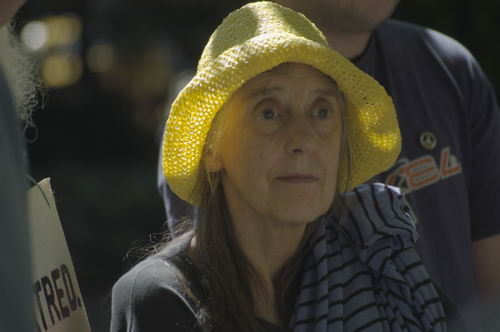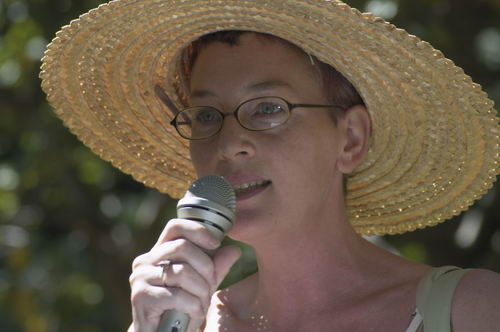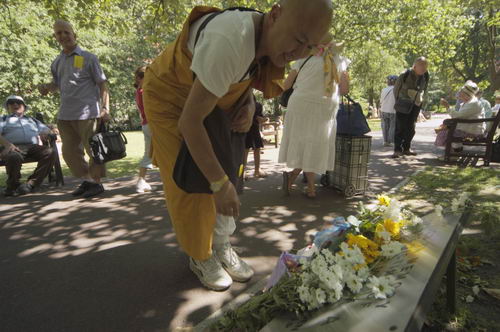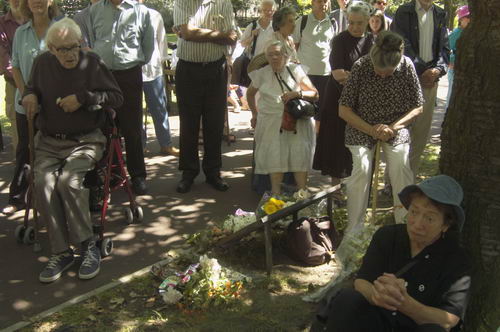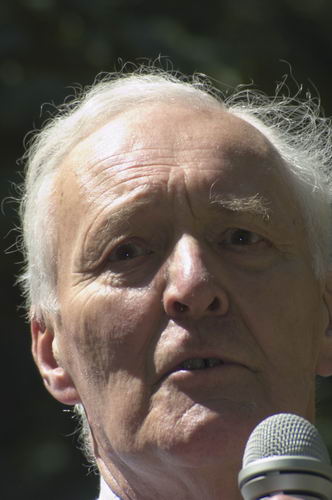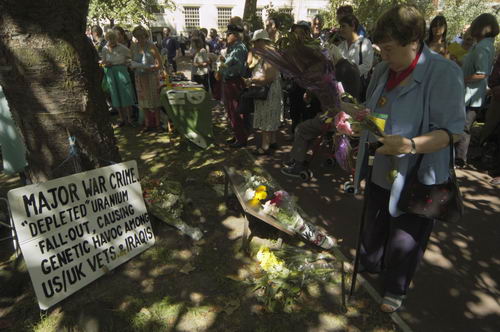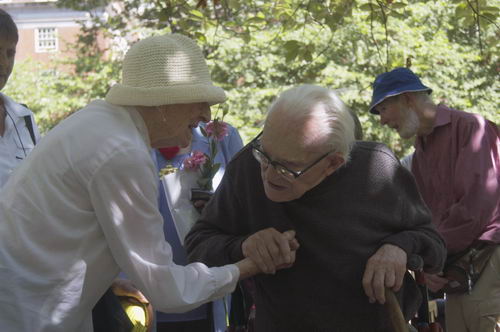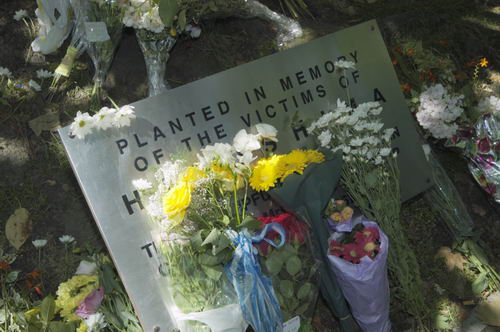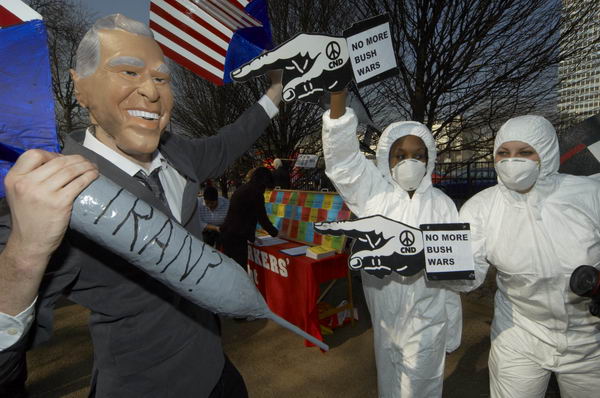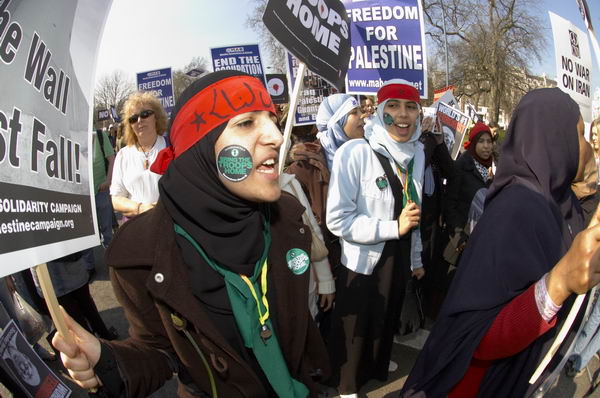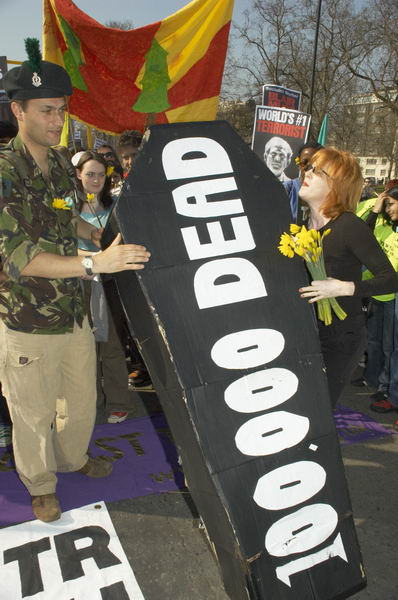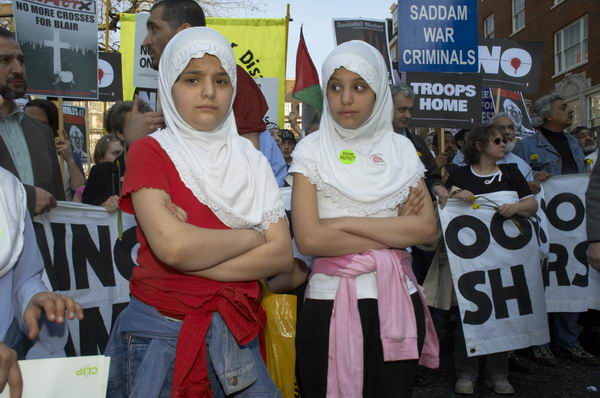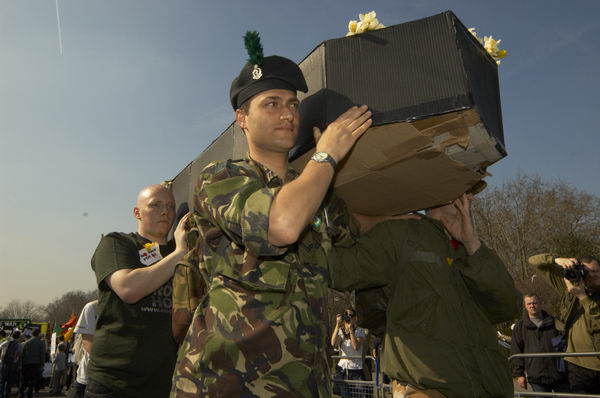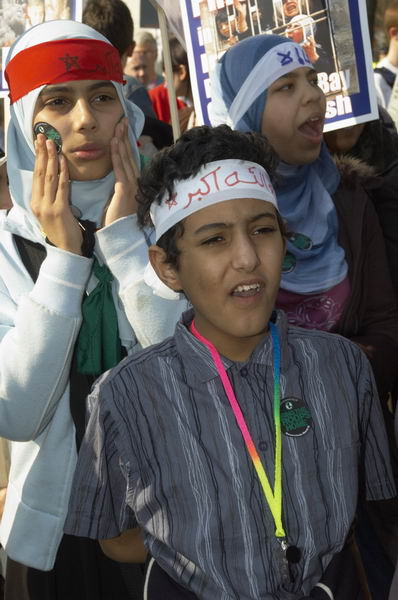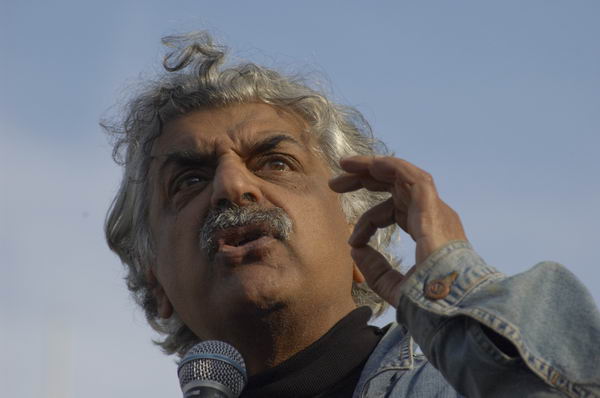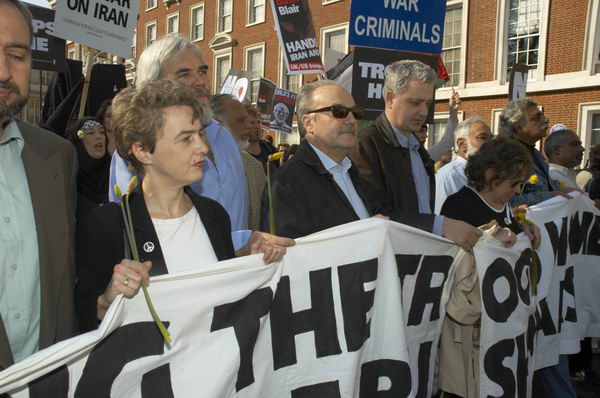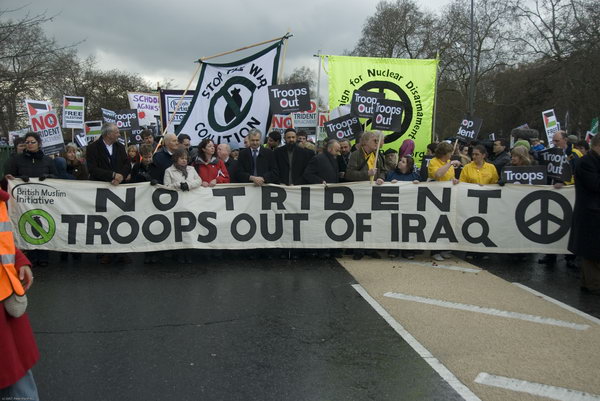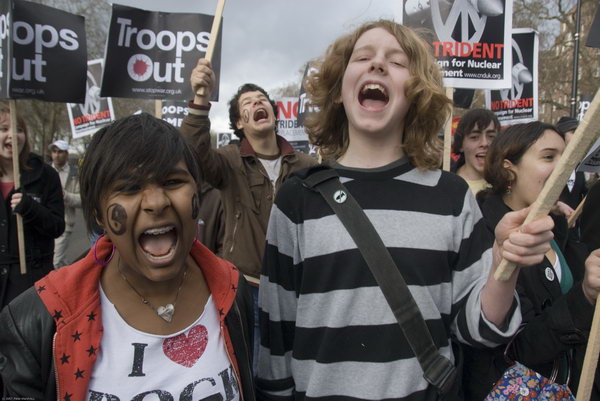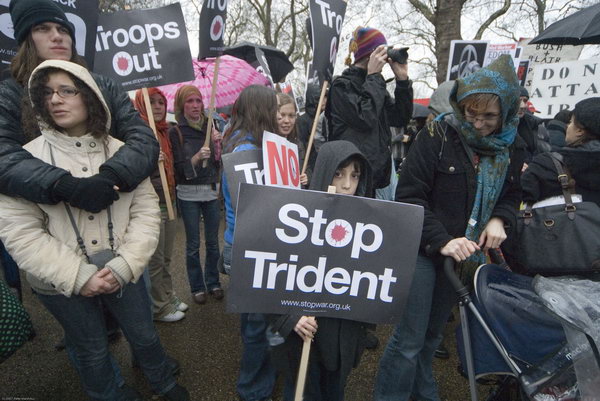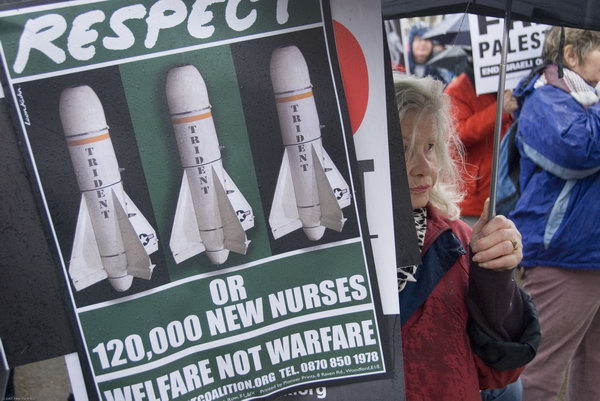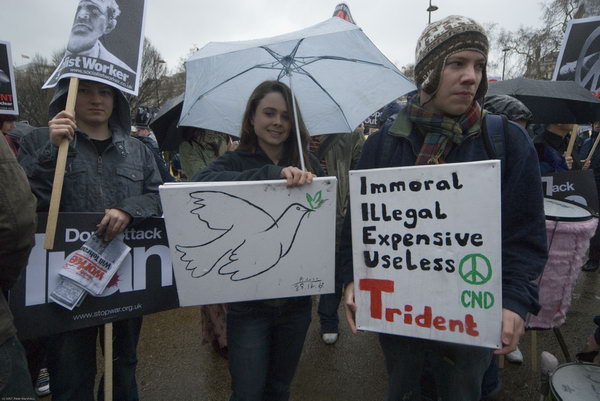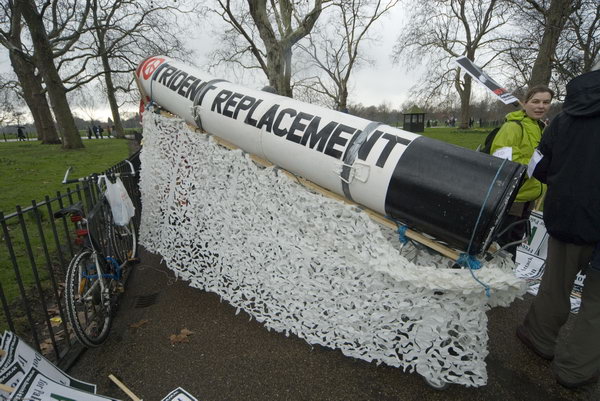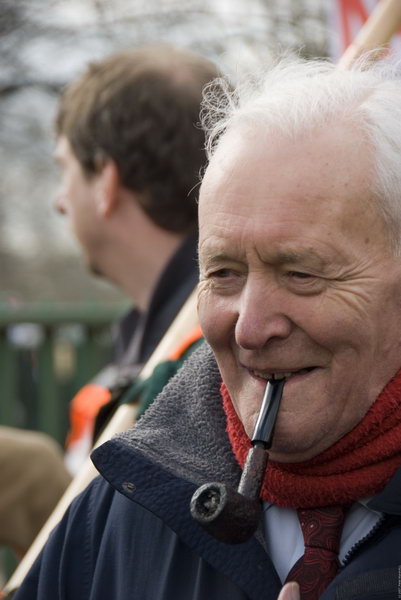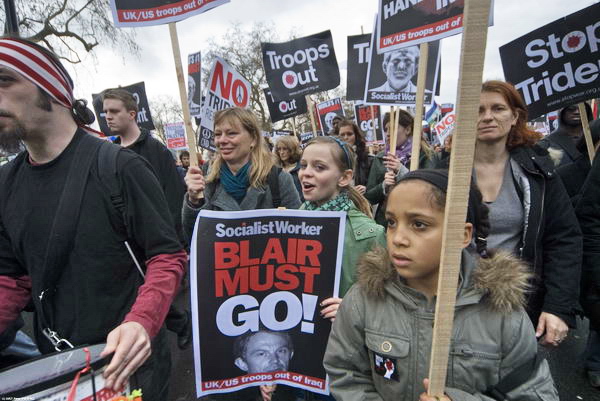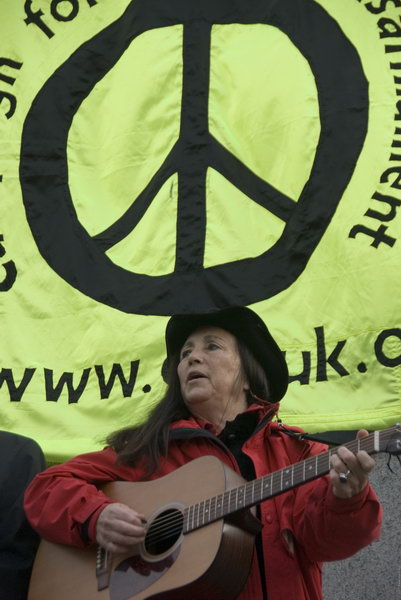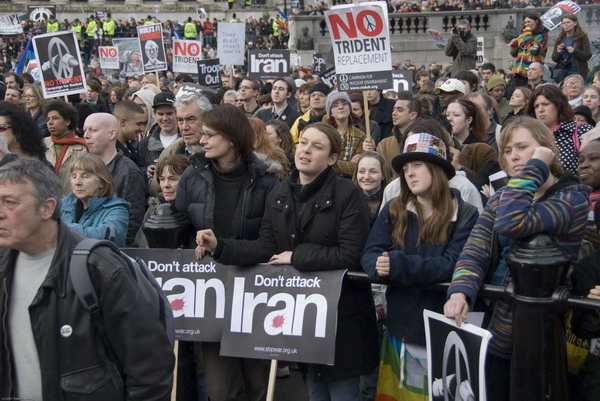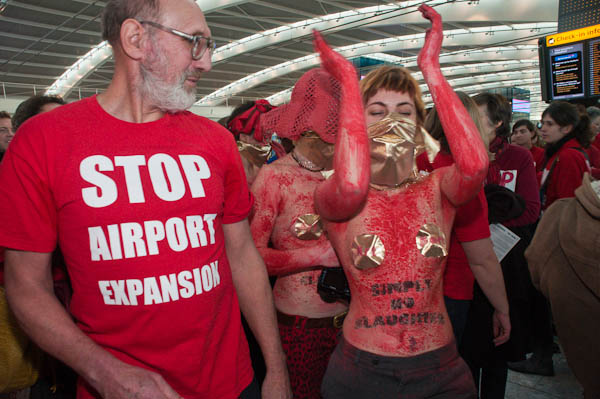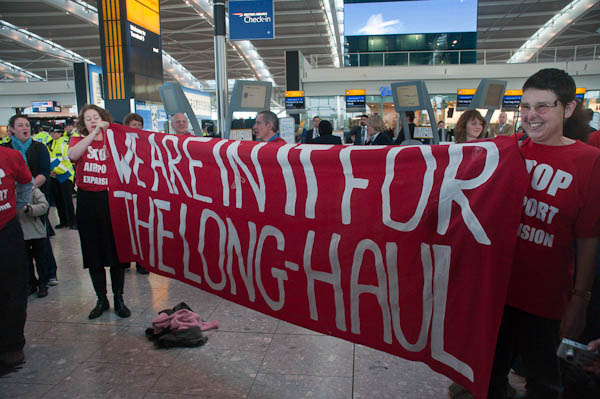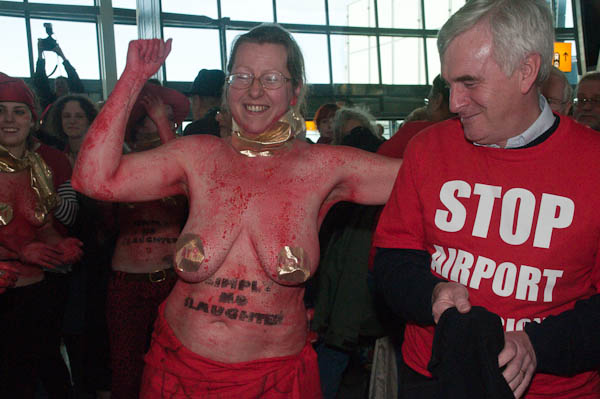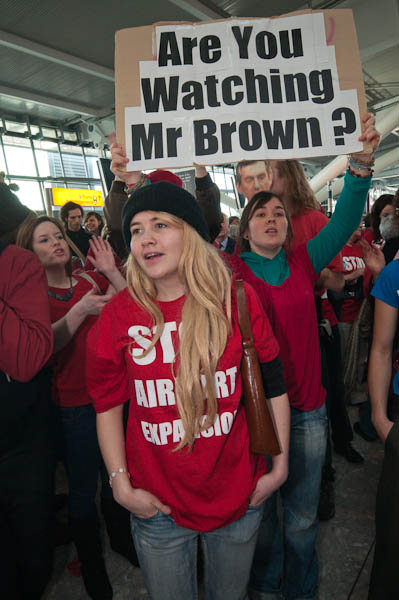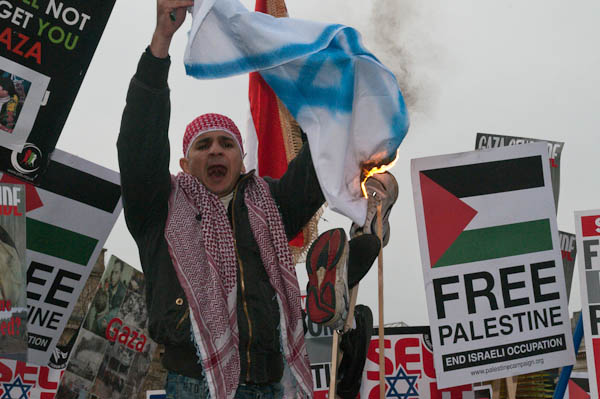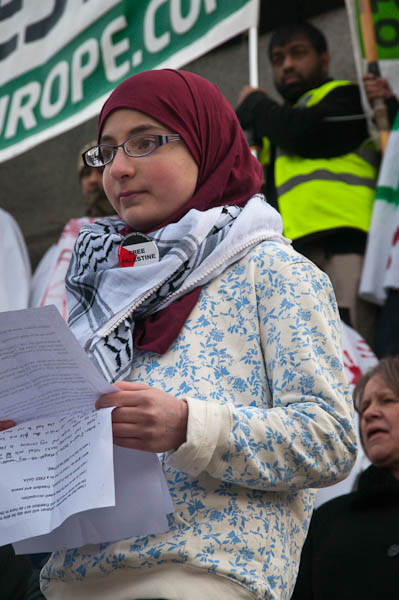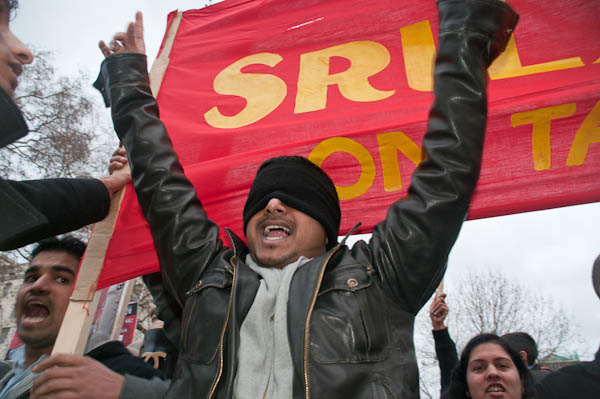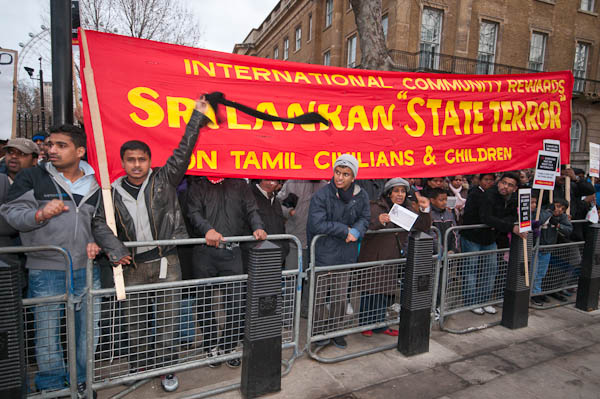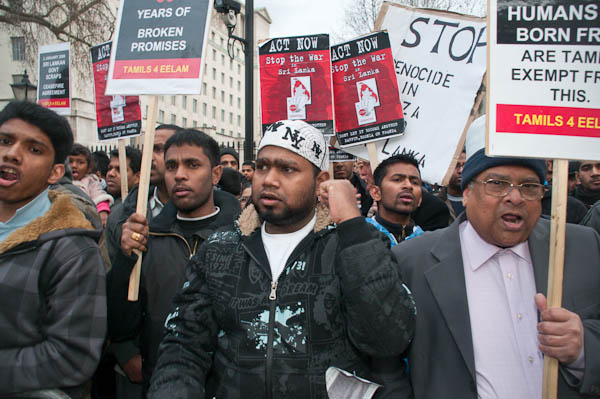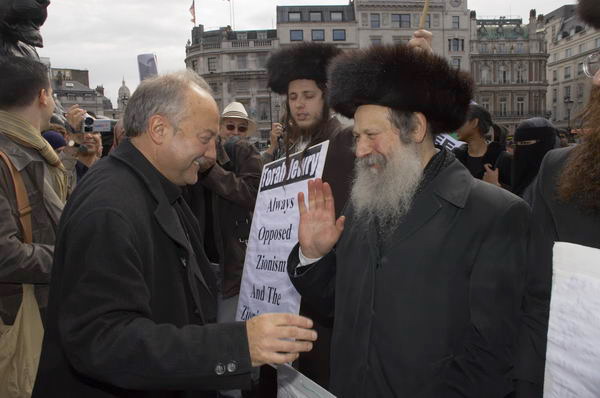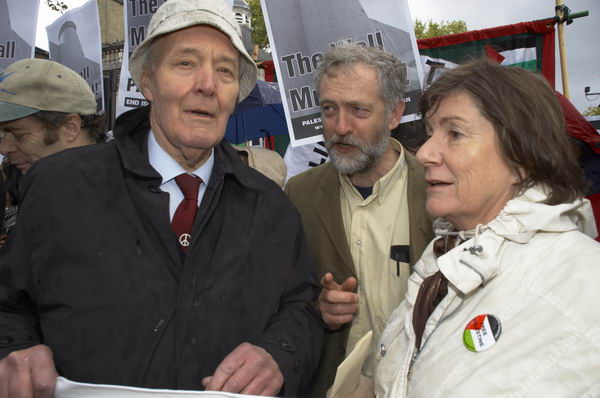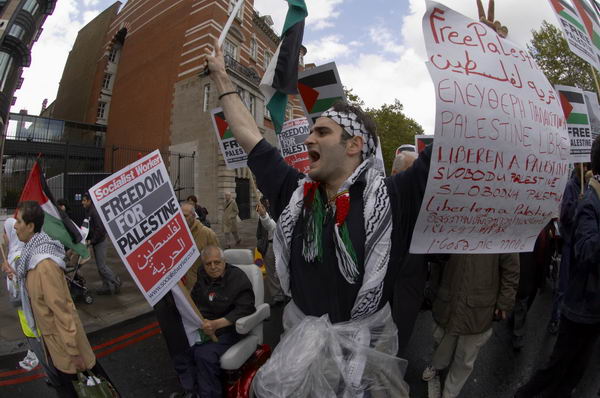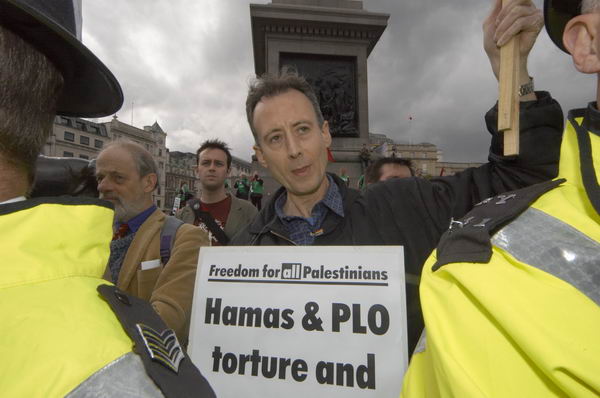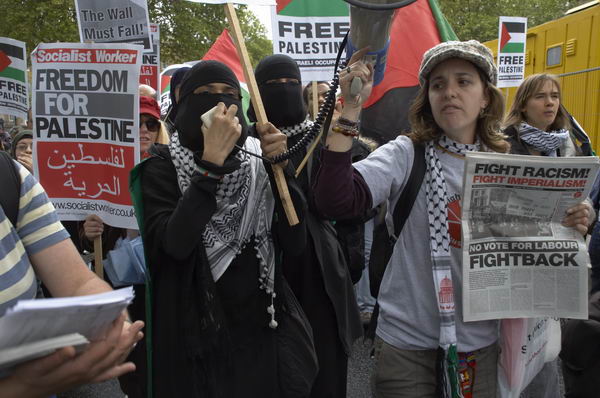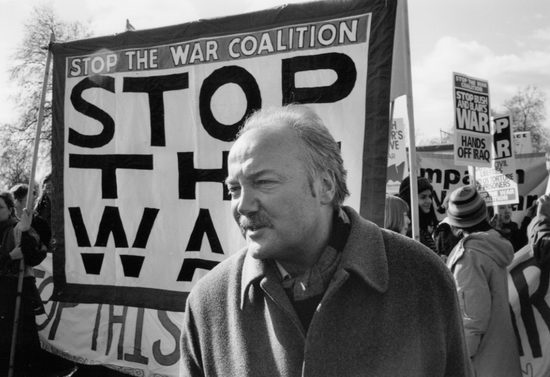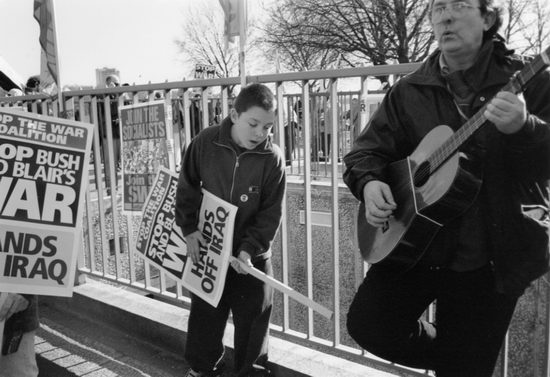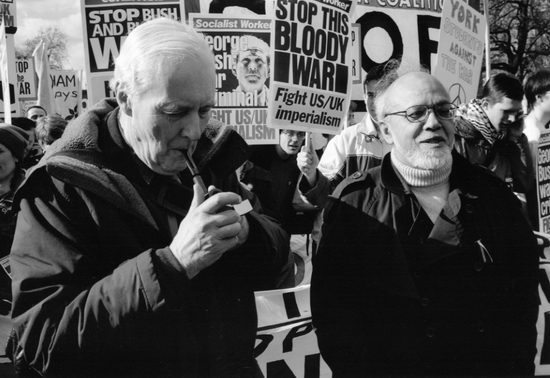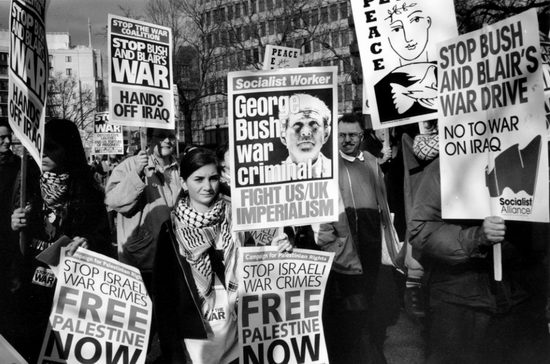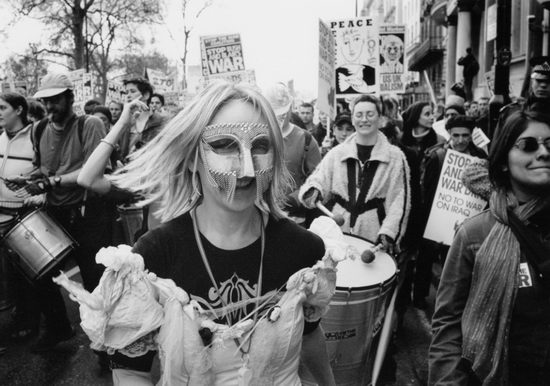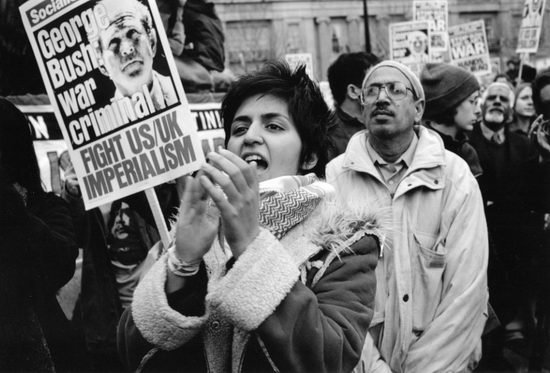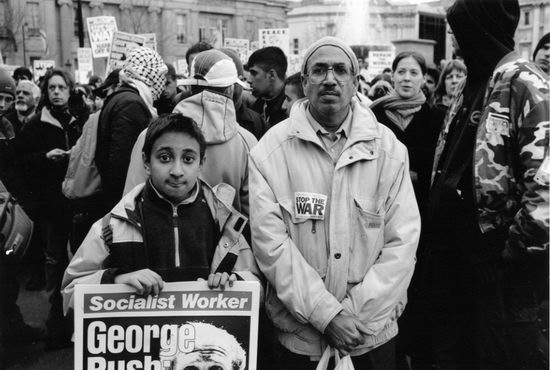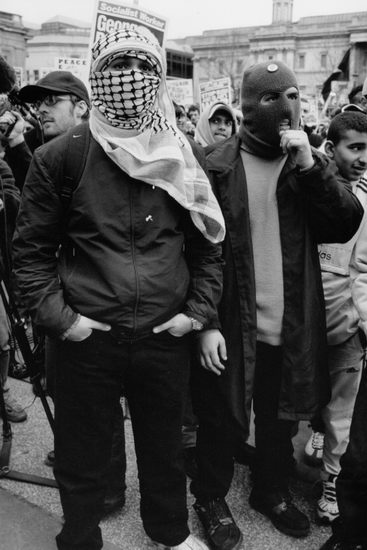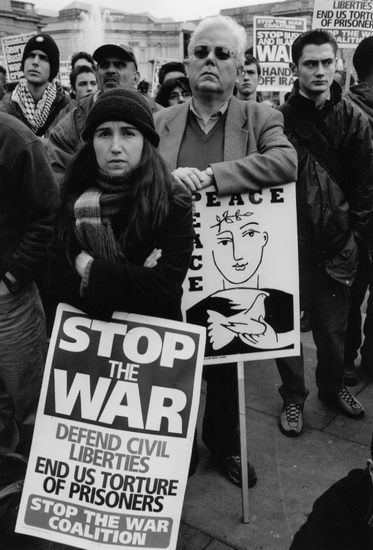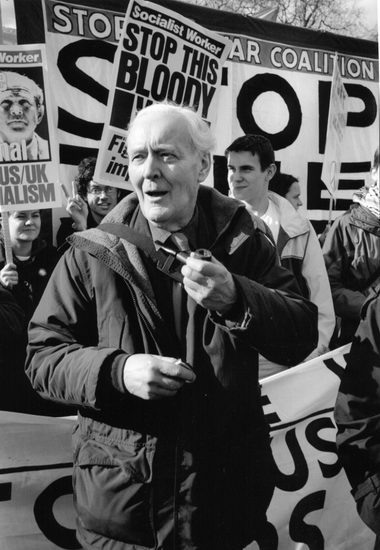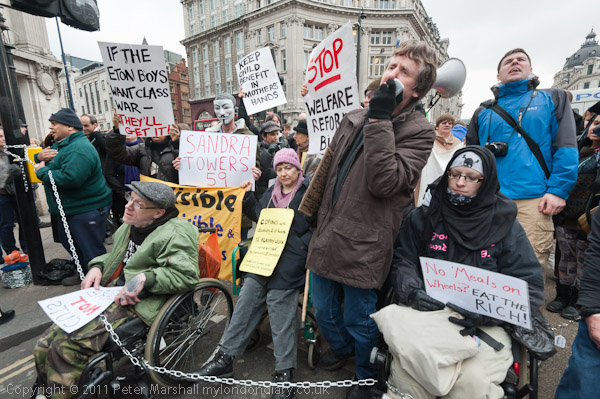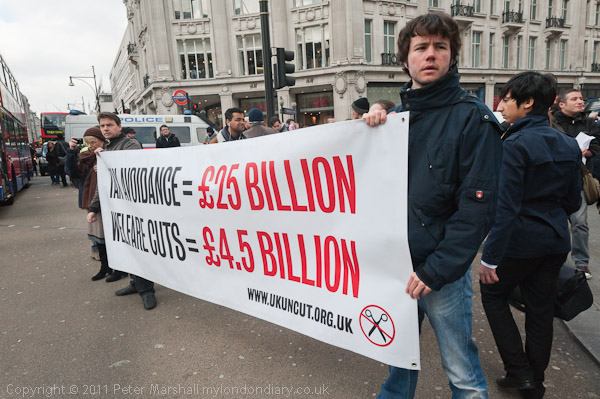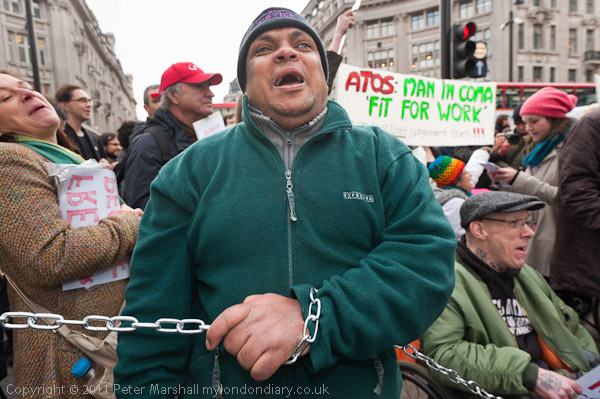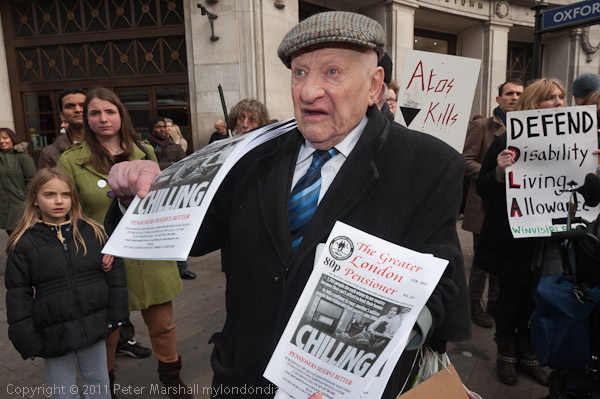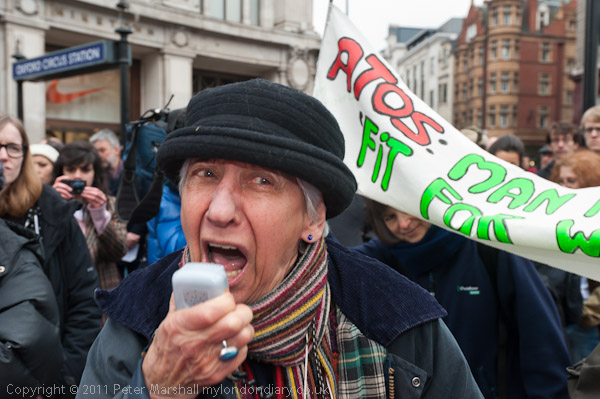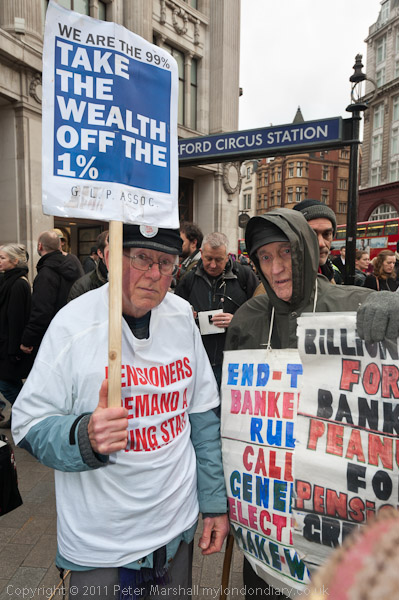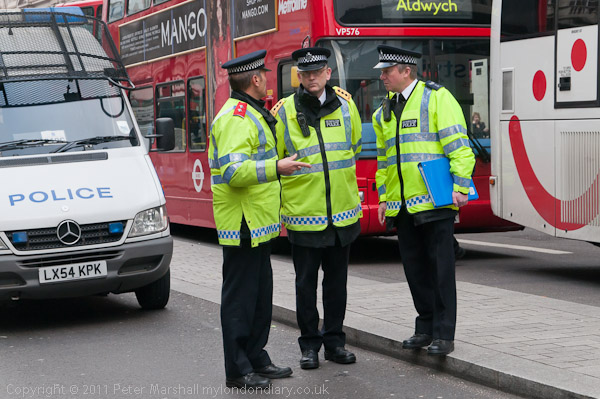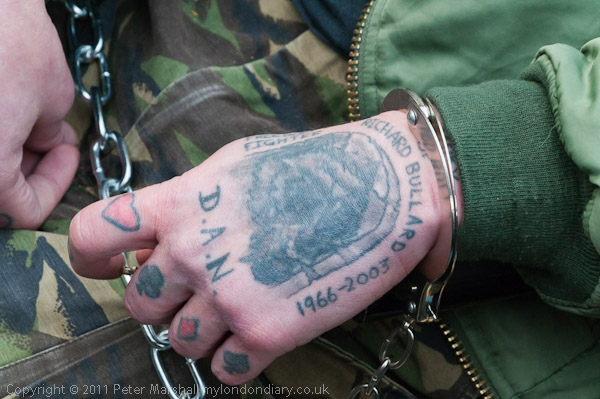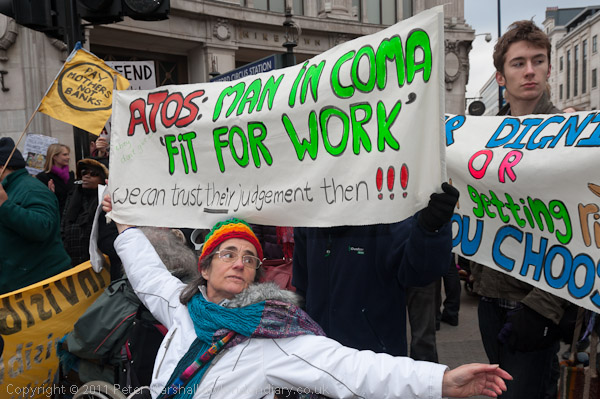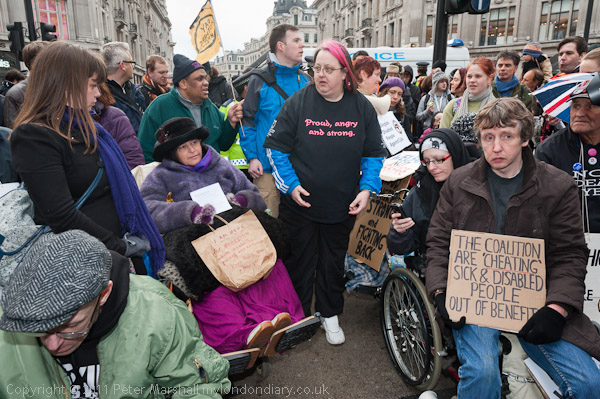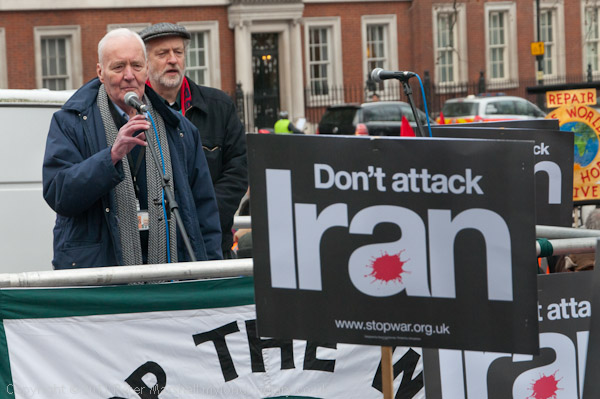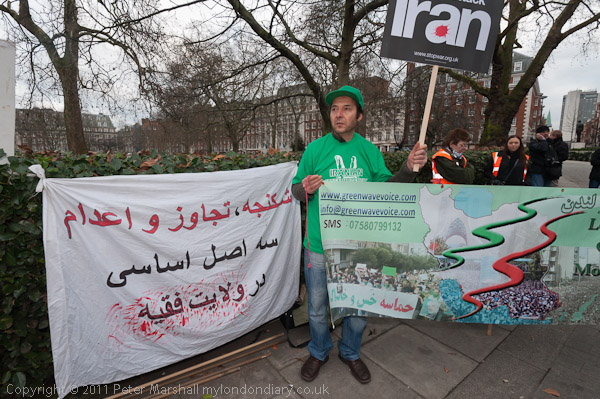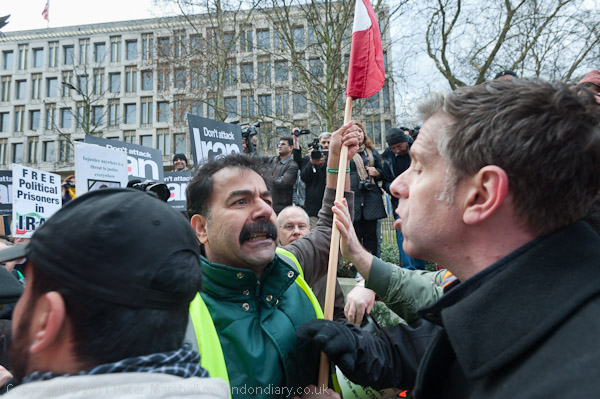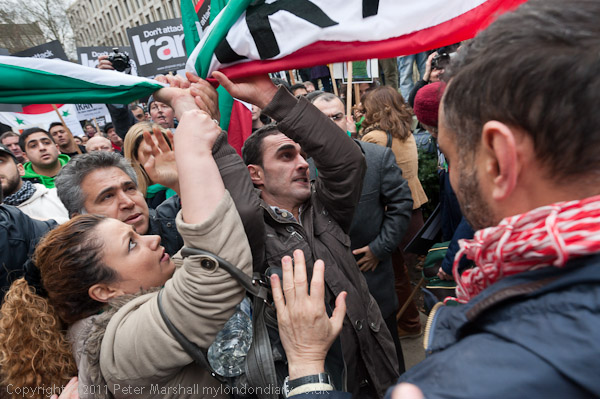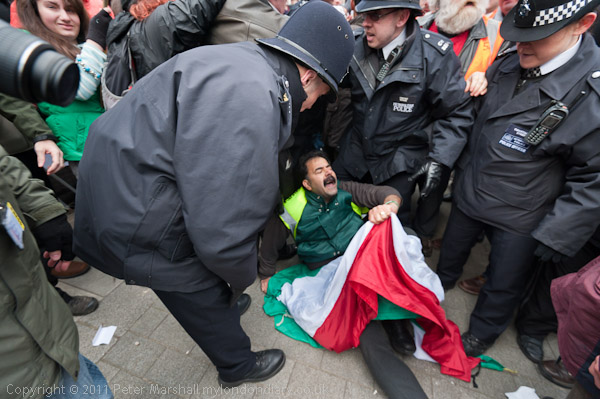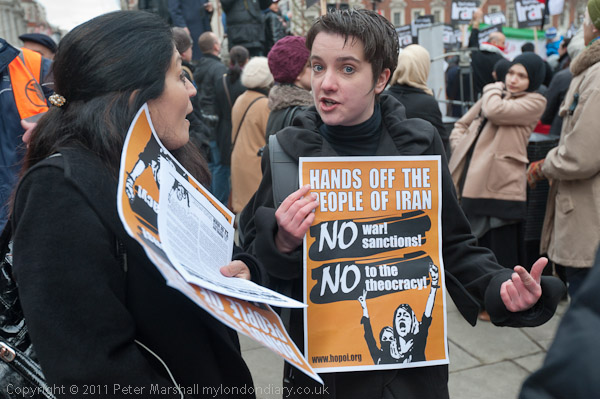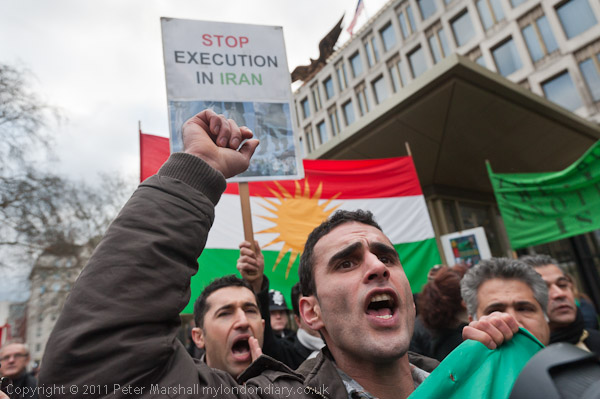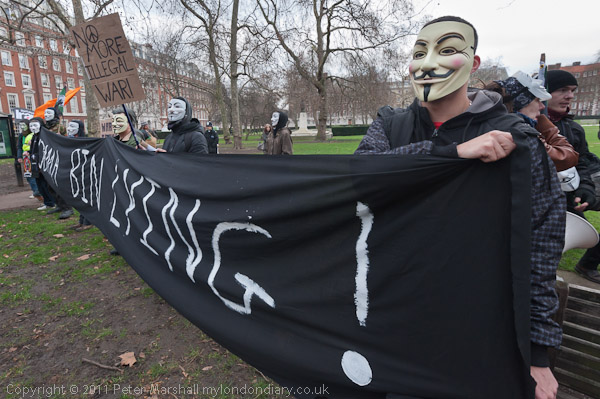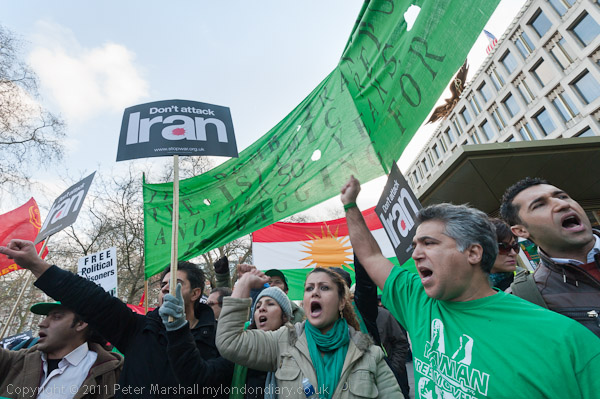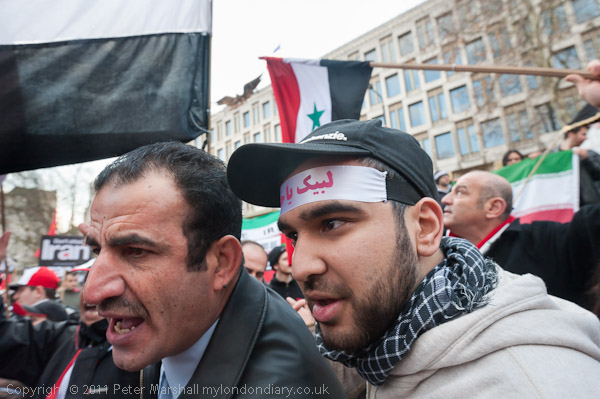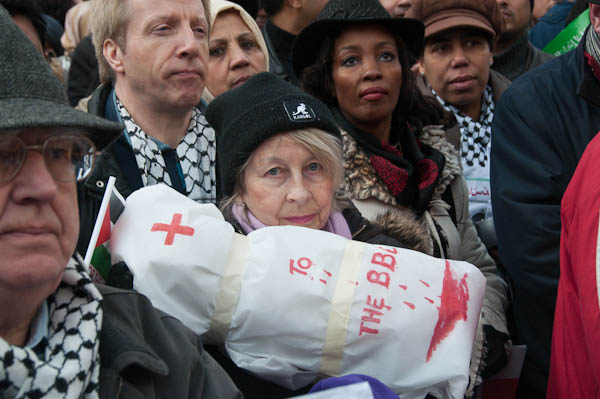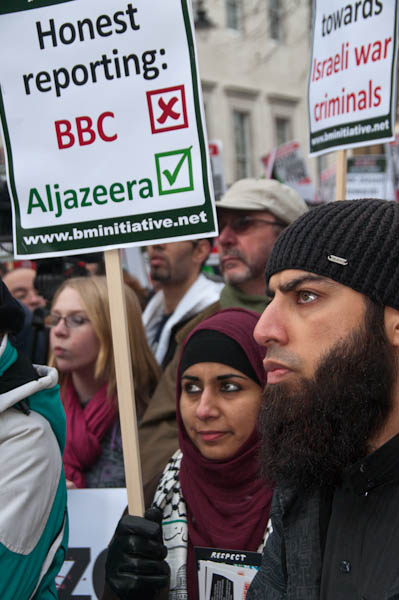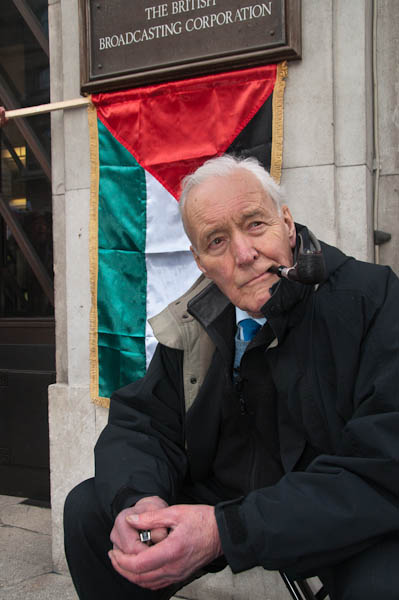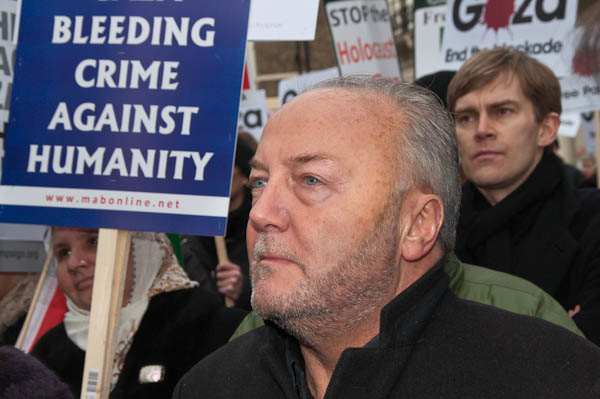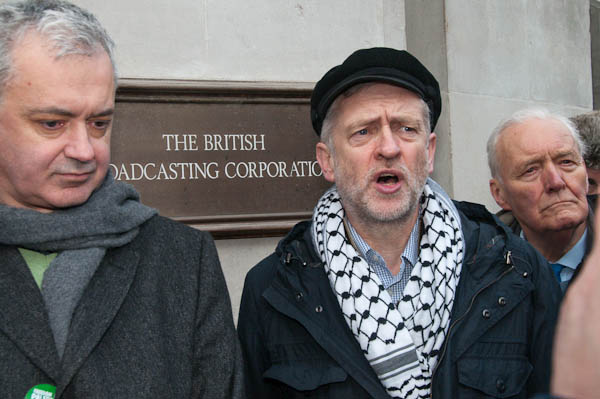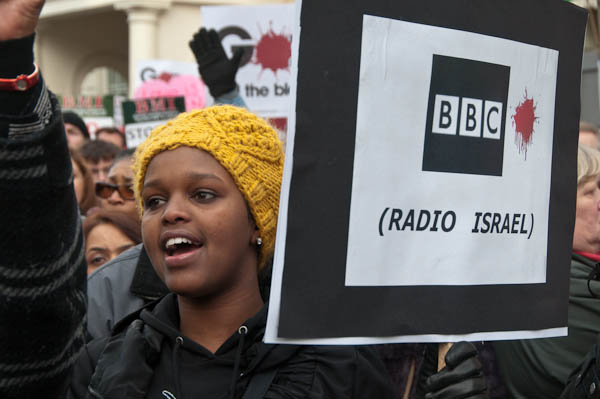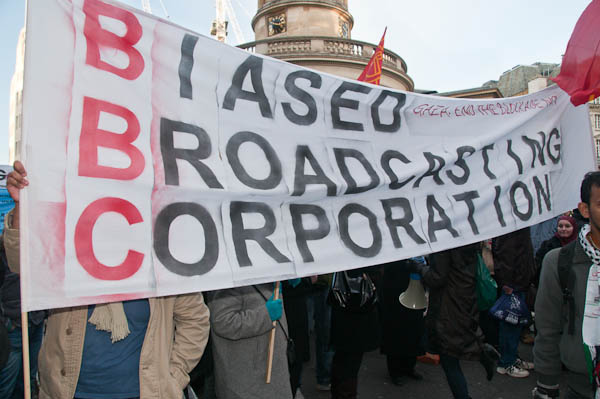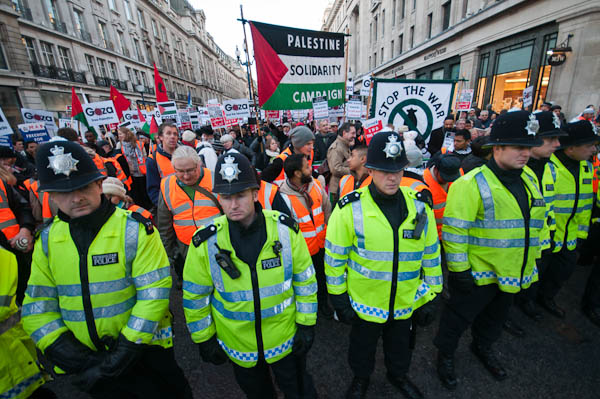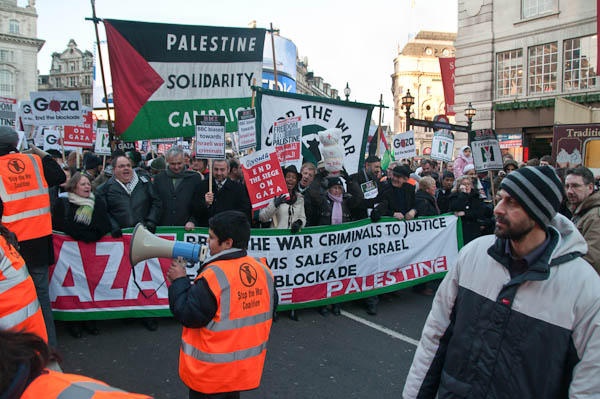US Climate Wrecking, Mumia & Stop The War: Friday 9th December 2011 I went to Grosvenor Square for a protest against the US blocking any progress on reducing world carbon emissions and also photographed a protest calling for the release of Mumia Abu-Jamal, “the world’s most famous death-row inmate” on the 30th anniversary of his alleged crime. From there went to Housemans bookshop for a crowded launch party of a book on 10 years of Stop The War campaigning.
USA Climate Treaty Wrecker
US Embassy, Grosvenor Square
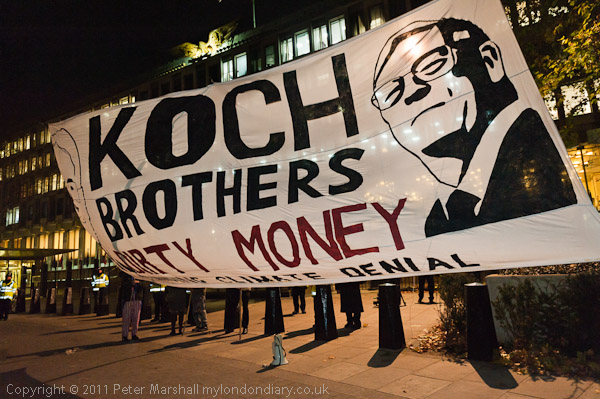
COP 17, the UN Climate Change Conference in Durban, South Africa, was due to end on 11th December by the USA was blocking any progress on adopting the worlds’ only emissions reductions treaty, the Kyoto protocol.
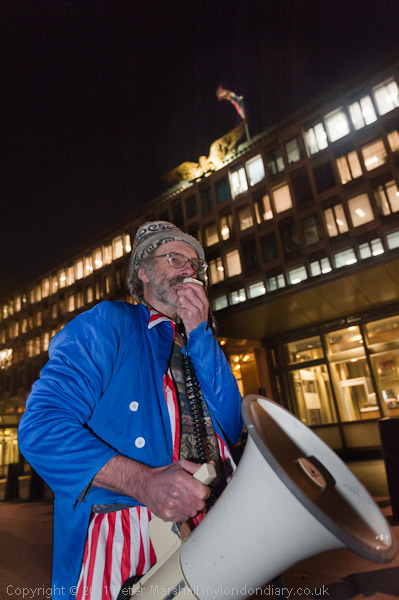
The USA was leading a small group of countries – also including Canada and Japan – in preventing global agreement. The protesters blamed the US policy on the lobbying by US industries, and in particular the Koch Brothers, climate change deniers whose huge fortunes come from fossil fuels and were the major funders behind the extreme right Tea Party movement in the Republican Party. No longer active as it shifted the party to the extreme right positions it now holds
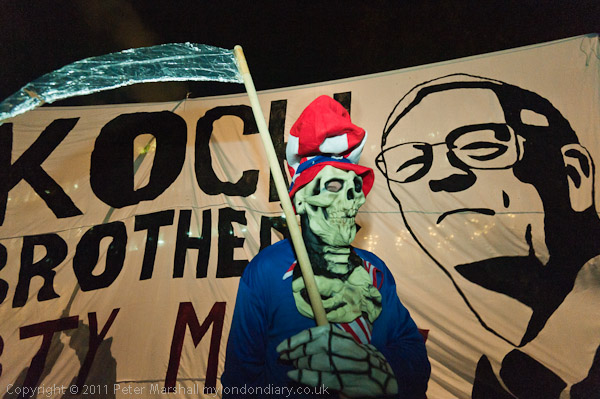
The Durban talks overran by 36 hours and failed to agree on a global plan, instead pushing the debate in the future, agreeing to establish a legally binding agreement by 2015 which would come into force by 2020. But further opposition again led by the US at all later COPs have prevented that happening.
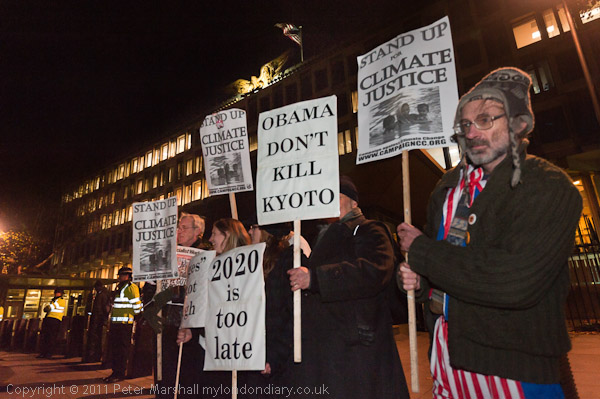
The protesters from the Camapaign Against Climate Change held up a giant 8 metre by 4 meter banner with some difficulty in front of the embassy ‘condemning the Koch brothers and their “dirty money” for preventing progress in tackling climate change. Continued opposition to any effective action by the US seems likely to result in much of the world becoming uninhabitable by the end of this century, with billions mainly in the world’s poorer countries dying.’
More pictures at USA Climate Treaty Wrecker.
Mumia Abu-Jamal 30th Anniversary Protest
US Embassy, Grosvenor Square
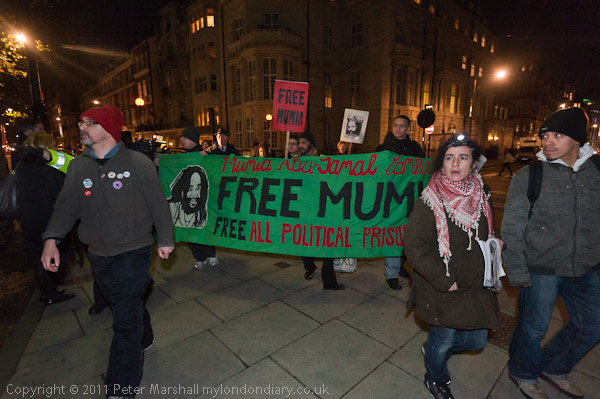
A second group of protesters marched to the US Embassy on the 30th anniversary of the killing of police officer Daniel Faulkner after the officer had stopped Mumia Abu-Jamal’s younger brother at 4am in Philadelphia, Pennsylvania. Mumia was alleged to have run across from his parked taxi to intervene. He was wounded by a shot from Faulkner and a revolver registered to Mumia which had fired five shots was found at the scene.

Mumia, a journalist and former Black Panther, was found guilty and sentenced to death in 1982, but supporters claim that the crime was not properly investigated. They aalso say he did not get a fair trial, with a predominantly white jury, ineffective legal support and incorrect direction to the jury by a racist judge. Another man is alleged to have admitted to the shooting.

In jail during various legal appeals, Mumia wrote the book ‘Live From Death Row‘ (1995) in which he described his life in jail and the corrupt racist nature of the US Justice system. Eventually a federal appeals court decided that a new sentencing hearing was needed as the instructions the jury were given were potentially misleading. But the US Supreme Court in October 2011 not to consider the case but his sentence was reduced to life imprisonment.
At the protest there were several speeches giving details of his case and a lengthy statement about the life imprisonment decision was read. But like many of his supporters around the world those at the protest felt that sentence was unacceptable as they held that “Mumia was innocent of the crime and in prison because of his race and his revolutionary views, held by a racist system.”
Mumia Abu-Jamal 30th Anniversary Protest
10 Years of Stop The War Book Launch
Housemans, Caledonian Rd
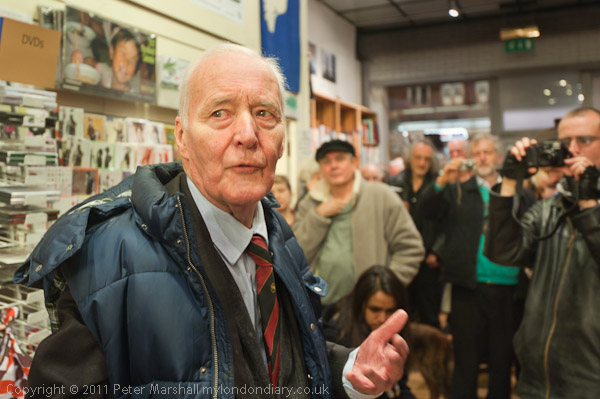
I was pleased to have a few of my pictures included in ‘Stop The War – A Graphic History‘ published to mark 10 years of campaigning.
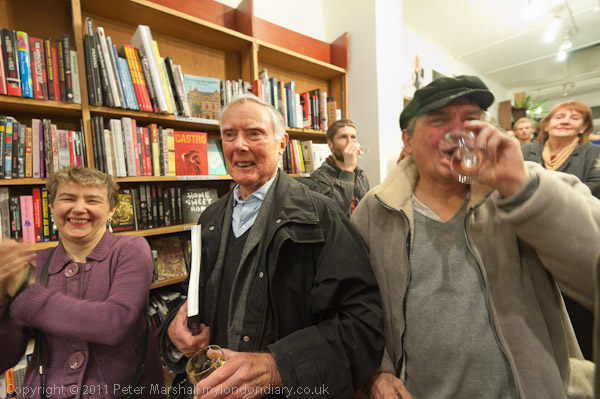
The book includes images by well-known graphics artists including Banksy and Ralph Steadman. I was particularly pleased to meet David Gentleman, whose graphic posters have inspired the movement – and of course feature in many of my pictures.
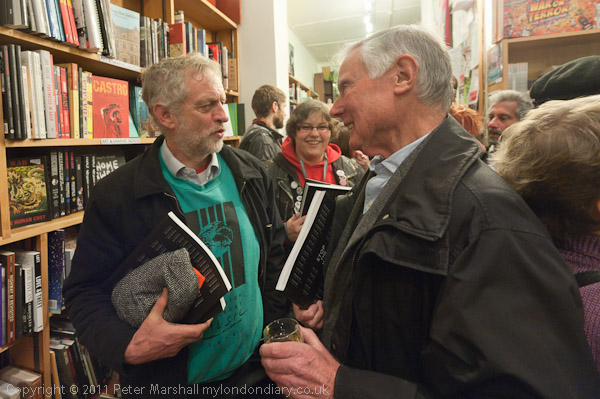
There are also pictures from a couple of dozen photographers, though most of the photos come from half a dozen of us. For me of course that seemed in many ways the most important section of the book as a historical record.
Many artists and photographers were present at the opening as well as leading figures in the campaign, including Tony Benn who contributed the foreword to the book.
More pictures at 10 Years Stop The War Book.
Flickr – Facebook – My London Diary – Hull Photos – Lea Valley – Paris
London’s Industrial Heritage – London Photos
All photographs on this page are copyright © Peter Marshall.
Contact me to buy prints or licence to reproduce.
